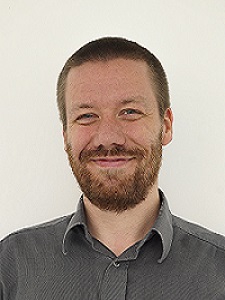The inconsistency theory of truth and nominalistic mathematics Polonsky Fellow
This tutorial will bring together two subjects that are not normally
discussed together, namely the inconsistency theory of truth and
nominalistic philosophies of mathematics.
Session 1
According to the inconsistency theory of truth, our conflicting intuitions when it comes to determining the truth value(s) of the Liar Sentence and its siblings are due to the fact that the linguistic rules for the truth predicate are inconsistent. This was first argued by Chihara [2] and later by Eklund [5] and Scharp [10]. I will explain this solution to the semantic paradoxes and provide what I believe to be the best defence of it. Doing so involves bringing in Lewis' [8] theory of language conventions and Nagel's [9] idea of a view from nowhere. Session 2
One conclusion from session 1 will be that we, as a language community, have a high degree of freedom to decide by convention on what logic to use, roughly in the sense of Carnap [1]. This puts the many formal theories of truth that have been proposed in a new light: they can be evaluated on the basis of how useful they would be as potential conventions, rather than on the basis of whether they are correct. From this perspective, we will take a closer look at Kripke's theory of truth [7] and van Fraasen's concept of supervaluation [11]. Then we will tinker a little with the possible convention they in effect describe until we get something that is useful for mathematics. Session 3
The idea of a nominalistic mathematics is to give a philosophical account of what mathematics is that does not inflate our ontology with ad-hoc abstract objects. Chihara [3,4] proposed that we can do so by constructing mathematics on possible open-sentences. Field [6] approached the same goal by using the system of all spatial regions of the universe as his foundation. I will argue that they both fail. Chihara assumes that there are uncountably many open-sentences, which is to stretch the concept of language beyond the nominalistic and into the abstract. And the spatial regions of the universe must either be understood as abstract collections (of concrete entities) or as collections determined by language, which means that Field's foundation is either not nominalistic or not sufficient for his purpose. However, using the lesson from session 2, we can do better: by relying on a non-classical logic convention, we can make the ontology to which we are limited as nominalists suffice for a scientifically adequate mathematics. |
 Prerequisites
I will assume a basic acquaintance with the Liar Paradox and philosophy of mathematics. Session 3 in addition presupposes knowledge of Cantor's theorem about the cardinality of the set of the real numbers and of mathematical analysis up to and including the Fundamental Theorem of Analysis. Bibliography
[1] Rudolf Carnap. Logische Syntax der Sprache. Springer, 1934. [2] Charles Chihara. The semantic paradoxes. Philosophical Review, 88:590-618, 1979. [3] Charles Chihara. Constructibility and Mathematical Existence. Oxford University Press, 1990. [4] Charles Chihara. A Structural Account of Mathematics. Oxford University Press, 2004. [5] Matti Eklund. Inconsistent languages. Philosophy and Phenomenological Research, 64:251-275, 2002. [6] Hartry Field. Science Without Numbers. Princeton University Press, 1980. [7] Saul Kripke. Outline of a theory of truth. The Journal of Philosophy, 72:690-716, 1975. [8] David Lewis. Conventions. Harvard University Press, 1969. [9] Thomas Nagel. The View from Nowhere. Oxford University Press, 1986. [10] Kevin Scharp. Replacing Truth. Oxford University Press, 2013. [11] Bas van Fraassen. Singular terms, truth-value gaps, and free logic. The Journal of Philosophy, 63:481-495, 1966. | ||||